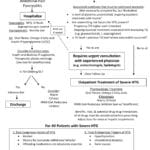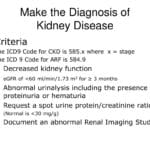This guide provides healthcare professionals with a comprehensive understanding of ICD-10 coding for elevated troponin, including the significance of accurate coding, interpretation of results, and the clinical implications.
Decoding Troponin and its Importance
Troponin is a protein complex essential for heart muscle contraction. When heart muscle cells are damaged, troponin I and troponin T are released into the bloodstream. Measuring these cardiac-specific troponins provides crucial insights into heart health. Interested in learning more about hypertriglyceridemia icd 10? Click on the provided link for additional information. For more details about icd 10 abnormal mammo, click on the link provided.
What Elevated Troponin Suggests
Elevated troponin levels signal heart muscle damage. This could indicate several conditions, including a heart attack, but it’s important to remember that elevated troponin doesn’t always mean a heart attack. Other potential causes include:
- Acute Coronary Syndrome (ACS): This includes unstable angina, non-ST-elevation myocardial infarction (NSTEMI), and ST-elevation myocardial infarction (STEMI).
- Other Cardiac Conditions: Heart failure, myocarditis (inflammation of the heart muscle), pericarditis (inflammation of the sac surrounding the heart), and cardiac contusion.
- Non-Cardiac Causes: Chronic kidney disease, pulmonary embolism, sepsis, and even strenuous exercise.
Elevated troponin, while often associated with heart muscle injury, doesn’t always indicate a heart attack; proper interpretation requires clinical context.
Navigating the ICD-10 Landscape
Accurate ICD-10 coding is critical for proper documentation, reimbursement, and data analysis. For elevated troponin, a key coding update took effect on October 1, 2023.
The Transition to R79.89
Effective October 1, 2023, the correct ICD-10-CM code for elevated troponin is R79.89 (Other specified abnormal findings of blood chemistry), replacing the previously used R77.8. Accurately coding elevated troponin with ICD-10 R79.89 is crucial for efficient reimbursement and precise tracking of this vital cardiac marker.
This change provides a more specific code for elevated troponin not related to a type 2 myocardial infarction (Type 2 MI), including “troponin leak” or troponinemia. Andrew Matheson LDS.RCS (Eng), CPC, CPMA, CANPC confirms, “Correct code is R79.89; other specified abnormal findings of blood chemistry.”
Why Accurate Coding Matters
- Fair Reimbursement: Accurate coding ensures appropriate reimbursement for healthcare services, minimizing the risk of claim denials.
- Data Analysis & Research: Correct codes enable meaningful data analysis for research, leading to improvements in cardiac care.
- Informed Clinical Decisions: Accurate coding clarifies the patient’s condition, supporting informed decisions regarding further testing and treatment.
Understanding Troponin Test Results
Understanding different troponin assays and their interpretation is vital for appropriate coding and clinical decision-making.
Types of Troponin Tests
High-sensitivity troponin tests (hs-cTnT for troponin T and hs-cTnI for troponin I) are the current standard. They detect even minor elevations, indicating potential early heart damage.
Interpreting the Results
“Normal” ranges are lab-specific, and even slightly elevated levels may be clinically significant. For example, hs-cTnT levels above 14 ng/l are generally considered elevated. Doctors must consider a patient’s overall clinical presentation, medical history, and other diagnostic test results, such as ECG findings, when interpreting troponin levels.
The Role of Serial Troponin Testing
Serial troponin tests, taken at different time points, provide a dynamic view of troponin levels. This helps determine the pattern of troponin release, aiding in diagnosis and risk stratification.
Comprehensive Clinical Considerations
Coding for elevated troponin requires a comprehensive approach, considering the patient’s overall clinical picture.
Step-by-Step Coding for Elevated Troponin
- Confirm Elevated Troponin: Review laboratory results to confirm elevated levels.
- Review Clinical Presentation: Evaluate the patient’s symptoms, medical history, and other diagnostic tests (e.g., ECG).
- Rule Out Type 2 MI: If the elevation is due to a Type 2 MI, different codes apply.
- Code R79.89: If the elevation is not related to a Type 2 MI, use R79.89.
Addressing Uncertainties and Future Directions
While R79.89 is the current standard, medical knowledge is constantly evolving. Ongoing research and advanced assays like high-sensitivity troponin may further refine our understanding and coding practices in the future. This forward-looking perspective adds value and positions your article as cutting-edge.
Key Takeaways
- Troponin is released into the bloodstream when heart muscle is damaged.
- R79.89 is the ICD-10 code for elevated troponin (effective October 1, 2023).
- Elevated troponin may indicate various conditions, not just a heart attack.
- Clinical context, including patient history, symptoms, and ECG findings, is crucial for accurate interpretation and coding.
- Accurate coding is essential for appropriate reimbursement and data analysis.
This guide provides a framework for understanding and coding elevated troponin. However, staying updated on the latest guidelines and research is crucial for accurate coding and optimal patient care. Always consult official coding resources and medical professionals for the most up-to-date information.
- Senior at What Age: Benefits & Eligibility Guide - March 29, 2025
- Unlocking Senior Benefits: How Old is a Senior? Your Complete Guide - March 29, 2025
- Master Russian Politeness:A Guide to Saying Please - March 29, 2025
















